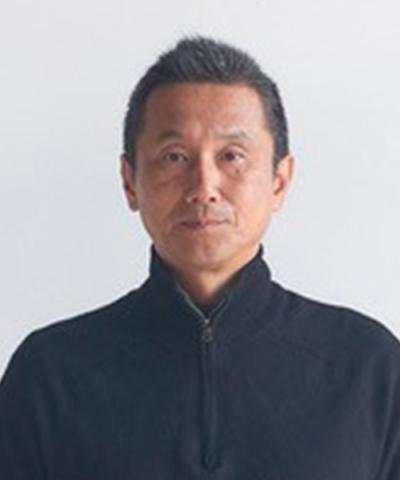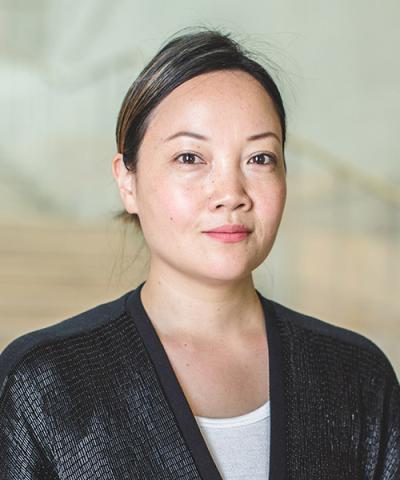
- Date
04.07.2019
- Time
2:00 PM – 4:00 PM
- Location
JAPAN HOUSE Salon, Level 5
- Fee
Complimentary
The 80s and 90s were a rich period for modern art in Japan. Following the rise and burst of the bubble economy, artists began to integrate subversive artistic languages and underground subcultures into their practice, making work about political stagnancy, transcending media, gender, nuclear crisis, and critiques of nationalism.
For this exclusive lecture, Japanese postwar art historian Mika Yoshitake will sit down with three of the most prolific and important artists working during this period—Kenjiro Okazaki, Yukinori Yanagi and Kenji Yanobe—to discuss their work and the overlapping themes in Japanese art from this era.
Each artist represents a distinct aspect of the era. As an intellectual and artist, Okazaki's practice engages theories of perception through interdisciplinary genres spanning architecture, literary theory, painting, reliefs, sculpture, robotics, and dance. Trained in both Japan and the U.S., Yanagi's large-scale and site-specific installations interrogate the politics of institutional borders and boundaries often drawing from systems of signs and symbolic imagery. And finally, Yanobe's darkly humorous, sci-fi installations and sculptures are part of a retro-futurist narrative that is coupled with nuclear crisis.
The discussion will be followed by a Q&A session with the audience.
This event is co-presented with Blum & Poe, within a wider public programming series connected to the exhibition Parergon: Japanese Art of the 1980s and 1990s, curated by Mika Yoshitake at Blum & Poe, Los Angeles.
Photo Credit: Yukinori Yanagi | Atlantic, 1996
Ants, colored sand, plastic boxes, plastic tubes, plastic pipes and bottles | 96 parts; 9 7/8 x 14 3/8 inches each (25 x 36.5 centimeters) | 78 3/4 x 289 inches overall (200 x 734 centimeters)
Installation view at BankArt Studio NYK, Kanagawa, Japan, 2016 | © Yukinori Yanagi
Registration
Registration has closed.
Speaker Profiles

Kenjiro Okazaki
Born 1955 in Tokyo, Okazaki is a Japanese visual artist whose works span over several genres, including painting, sculpture, as well as landscape and architecture. Many of his works have been featured in public collections throughout Japan and in various exhibitions around the world. In 2002, Okazaki was selected as the director of the Japanese pavilion in the International Architecture Exhibition in the Venice Biennale. He worked on a collaborative performance ‘I Love My Robot,’ with choreographer Trisha Brown, which premiered in early 2007. He received the Smithsonian Artist Research Fellowship at the Hirshhorn Museum and Sculpture Garden in 2014. Okazaki is also active as a theoretician and critic, and is the author or co-author of several books, including Renaissance: Condition of Experience (Bunshun Gakugei Library, 2015) featuring his analysis of Filippo Brunelleschi, and Abstract Art as Impact: The Concrete genealogy of Abstract Art (Akishobo, 2018). Okazaki received the Minster of Education Award for Fine Arts in 2019.

Yukinori Yanagi
Yukinori Yanagi’s artistic career began in 1986, and since that time his unconventional work—which has used, for example, ants and dung beetles—has consistently addressed the issue of movement. After receiving the Aperto Award at the 45th Venice Biennale in 1993, Yanagi moved to New York and started to work internationally. His work then featured in numerous international exhibitions including Bienal de São Paulo (Brazil; 1996) and La Biennale de Lyon (France; 1996). In 2000, Yanagi became the first foreign artist living in New York to be invited to exhibit at the Whitney Biennial. In 2008, he completed his long-term project “Inujima Seirensho Art Museum” in Okayama, which he began in 1995. The piece aimed to revitalize the Japanese island of Inujima, by turning a defunct copper refinery into art using renewable energy. In 2012, he founded ART BASE MOMOSHIMA, an art center located in a former junior high school on the remote island of Momoshima in Onomichi city. His recent projects include a solo exhibition entitled "Wandering Position" at BankART Studio NYK (Japan; 2016), and several large-scale site-specific works at the 21st Biennale of Sydney (Australia; 2018).

Kenji Yanobe
Born in Osaka in 1965. In 1990, he presented the "Tanking Machine", an experiential work that allows you to meditate in a tank with physiological saline. After that, he created a series of mechanical sculptures incorporating elements of Japanese subculture around the theme of surviving in modern society. The source of the idea came from the “ruins of the future,” inspired by the Osaka Expo site where he played as a child. Since 1997, he has worn a radiation “atom suit,” as part of a performance entitled the “Atom Suit Project,” where he has traveled to Chernobyl. From 2000, his work has shifted to the idea of “revival.” He produces huge sculptures such as his ventriloquist puppet “Torayan,” protector of children, and his “Lucky Dragon” sculpture based on the Daigo Fukuryu Maru, a Japanese tuna fishing boat contaminated by nuclear fallout. He also does large-scale performances using fire and water. After the Great East Japan Earthquake of 2011, his monument of hope, "Sun Child," has been shown both in- and outside of Japan. His large-scale works question the origins of art and meaning of existence, with connections to regions and the environment.

Mika Yoshitake
Yoshitake unveils Parergon: Japanese Art of the 1980s and 1990s as Blum & Poe’s Curator of Special Projects. She earned her M.A. and Ph.D. in Art History from UCLA, and was curator at the Hirshhorn Museum and Sculpture Garden in Washington, D.C. from 2011-2018. Yoshitake's experience has led her through a multitude of linked curatorial terrains, including as project coordinator for the international tour of © MURAKAMI (2007-09), which originated at the Museum of Contemporary Art, Los Angeles, and organizing curator of Yayoi Kusama: Infinity Mirrors (2017-19), a six-venue North American tour, originating at the Hirshhorn. In 2012, she curated the AICA-USA award-winning exhibition, Requiem for the Sun: The Art of Mono-ha at Blum & Poe, Los Angeles, CA. Yoshitake’s extensive scholarship on postwar Japanese art situates her in the unique position to pursue the significant shifts in artistic strategies since the 1960s and '70s that opened up an explosion of genres and subcultures in the 1980s and ‘90s. She is currently Guest Curator at Los Angeles County Museum of Art, Los Angeles, CA working on a large-scale solo exhibition to be announced this year.

